
Topics
- Insects/Pollinators
- Forestry
- Agronomy
- Biology
- Cultural Resources
- Manure Management
- Nutrient Management
- Pest Management
- Threatened & Endangered Species
Insects/Pollinators
Pollinators aren’t just BEES!
They’re birds, bees, butterflies, moths, flies, ants, beetles, bats and even some other small mammals. Pollinators are AMAZING and humans need them for life! You can learn A LOT about what they do, what they need from us, and how YOU can have a positive impact by using information and resources found on this NRCS webpage. Check it out!
WHY SHOULD YOU CARE?
In the United States, the pollinators we depend on for most of our pollination services are bees, including the non-native European honeybee and more than 4,000 different species of native bees. Sadly, scientists have seen evidence of bee population declines--not only in the United States, but around the world. In order to turn things around, scientists and researchers encourage us to make some changes in the way we manage the land we live on and farm.
Amazing Fact: Of the 100 crop species that provide 90% of the world's food, more than 70 are pollinated by BEES!
NRCS KNOWS POLLINATORS!
It’s more important than ever that we work together to improve existing habitat and provide new habitat for pollinators. This is a major focus for USDA’s Natural Resources Conservation Service (NRCS) in Illinois and across the country. Pollinator populations are one of many reasons why NRCS works closely with our many conservation partners and private landowners.
NRCS is concerned about bees and ALL pollinators. We can identify pollinator resource needs on your property and offer ways to improve pollinator habitat. NRCS can provide farmers with guidance and financial assistance to purchase seed, plants, and manage acres of pollinator habitat over the long-term. NRCS also compiles lists of native plant species your pollinators WANT and NEED to survive.
Sample Seeding Mixes for your EcoRegion
Different Illinois locations have different environments, ecosystems, and soils that successfully support pollinator plant species to ensure local pollinators have what they need to survive and THRIVE. Find your EcoRegion on the map above and then download the sample seeding mix of species from the list below:
PUBLICATIONS
Perilous Plight of the Pollinator
This colorful and fun brochure briefly explains the important role pollinators play in agriculture. It identifies native plants, trees, grasses, herbs, and flowers critical to ag production. This publication is great for students and educators to increase general awareness about pollinator issues.
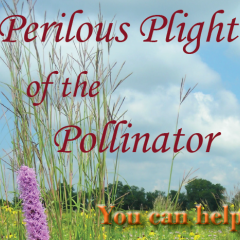
Pollinator Gardens-Design Guide
This 8-page booklet offers guidance on designing gardens for pollinators, steps for site preparation and maintenance. This publication is great for homeowners, landscape managers, educators, landowners, schools, and businesses—anyone interested in adding improvements to small-scale sites.
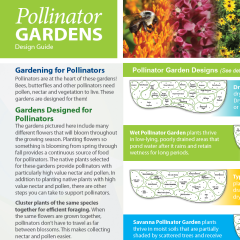
Monarch Butterfly Habitat Development Project
This tri-fold brochure briefly discusses why Monarch butterflies are important to agriculture and describes NRCS’s Monarch Butterfly Habitat Development Project. This publication is good for introducing options to farmers, landowners, or operators about NRCS program options.
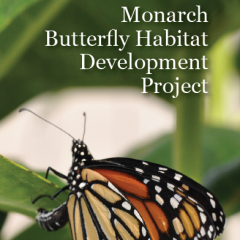
Monarch Butterfly Habitat Development Project
This colorful, one-page factsheet shows the nine states that encompass the Monarch Butterfly’s migration route from Texas towards Canada. This publication is good for introducing farmers, landowners, and operators to program options.

Wildlife Habitat Planting
This is guidance material NRCS staff provides to farmers/landowners for specific recommendations and information needed to successfully establish conservation cover that supports pollinators on their land/acres. This publication is ideal for landowners who are ready to implement practices.
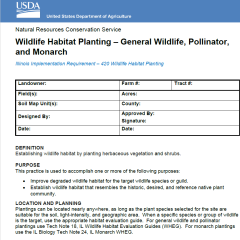
Pollinator Biology and Habitat Technical Note
This 34-page flier provides detailed information on how to plan for, protect, and create pollinator habitat. Information is detailed, scientific, and highly technical. This publication is useful for landowners and farmers who are serious about learning more about pollinator habitats and the science.

Monarch in the Making
This is a full color poster with close-up photographs that follow the life cycle of a Monarch butterfly (Danaus plexippus) from egg, to caterpillar, to chrysalis, and finally to butterfly. This is perfect as supporting material for educators or for posting in classrooms.
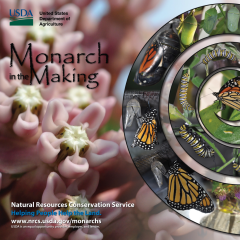
Links
- University of Illinois Pollinatarium
- Xerces Society
- Xerces Invertebrate Conservation Fact Sheet: Tunnel Nests for native Bees – Nest Construction and Management (PDF)
- Illinois Wildflowers
- NatureServe Explorer
- Butterflies and Moths of North America: collecting and sharing data about Lepidoptera
- Bee Spotter
- BugGuide
Forestry
Direct Seeding Handbook
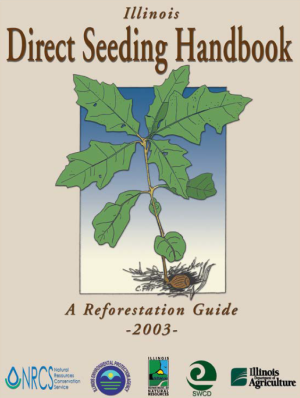
This online handbook is broken down by chapters. You can download each chapter to build your own handbook.
If you would like more information on Direct Seeding in Illinois, contact:
Wade Conn USDA-NRCS State Forester, Champaign, Illinois
Table of Contents
- Chapter 1 - Introduction to Direct Seeding
- Chapter 2 - Overview of Direct Seeding
- Chapter 3 - Species Lists and Species Reference Sheets
- Chapter 4 - Organizing for Local Collection
- Chapter 5 - Collecting the Seeds
- Chapter 6 - Handling, Storage, and Distribution
- Chapter 7 - Illinois Standards and Specifications for Direct Seeding
- Chapter 8 - Plantation Establishment
- Chapter 9 - Direct Seeding Web Site an Database
- Appendix
Direct Seeding
View this Power Point presentation for a guide with good details on direct seeding to establish a forest.
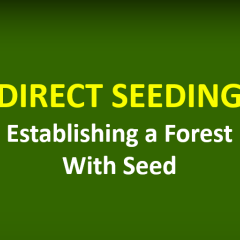
Taking Good Care
Vermilion County farmer does things ‘different’ than neighbors
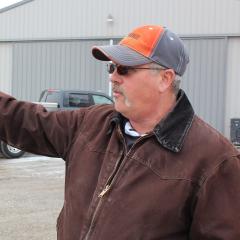
Carrying The Conservation Torch
Find out how this family operation is improving the soil and doing all they can to protect water quality.

